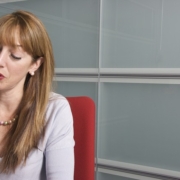The Shape of the Conference Table Determines Success or Failure
Contributed by Ruth Haag of www.RuthHaag.com
 When you are leading an unruly group, you need to take every advantage to maintain control. The shape of your meeting table can help or hinder you.
When you are leading an unruly group, you need to take every advantage to maintain control. The shape of your meeting table can help or hinder you.
A Round Table Hampers Decisions
King Arthur’s round table was created to signify that all sitting at the table were equal.
Students in law school are often told of a jury room that had a round table installed for the first time. The story says that this room produced more hung juries than ever before. When the round table was replaced by a more traditional rectangular table, the story says that the juries using the room began to reach verdicts.
With a round table, like King Arthur’s, it appears that no one is in charge. With all members appearing equal, it is hard to come to a decision, in spite of the fact that a leader or foreperson has been named.
A Long, Thin Table Encourages Cliques
When I was president of a nonprofit organization, the worst board meeting that I ever lead was one in which we were in temporary quarters and had about 5 patio-style tables strung together to make a rectangular table. These tables were very narrow, designed for small groups of two to four people to have intimate conversations with one another.
When we strung them together, we ended up with a table about 15 feet long, but only 3 feet wide. What happened in the meeting was that people across from one another at the table began to talk to one another, instead of listening to me (I don’t usually have this problem). Those at the far end paid less attention to me than those close up, but all did a fair amount of gossiping. The meeting lasted more than an hour, and little was accomplished.
I observed a similar phenomenon at a meeting where two narrow folding tables were put together, end to end. The people at each of the tables informally formed into a clique. There was some gossiping and, in general, members at each table agreed with those at their table and not with those at the other table.
Face-to-Face at a Distance Encourages Rudeness
On the other hand, when tables are arranged in a U-shape, all participants are quite far away from one another. They are looking directly at one another, and not at the leader. I have noticed that the participants in this set-up are more combative with one another, often shaking their fingers and berating those across the “U” from them.
The Basic Solution: A Rectangular Table With Proper Width
We can see that the relative proximity of attendees to one another is important, as is the location of the Leader.
The attendees need to be close enough that they feel they cannot say rude, threatening things to one another, but far enough away that they cannot form into unruly cliques.
I propose, therefore, that the best conference table is one that is rectangular, but wide enough that those on either side cannot easily whisper to one another, about 5 feet. The chairs need to be positioned so that 1 foot of space is provided between participants. The leader sits (or better yet, stands) at one end.
The Perfect Solution: A One-Ended Rectangular Table
If the leader wants to take every advantage, the table should have only one end, where the leader stands. The far end should be pushed against a wall. The leader should put their most loyal supporters at the end near to them, and their opponents at the farthest end.
Ruth Haag (www.ManageLiving.com) is the President and CEO of Haag Environmental Company, a hazardous waste consulting firm. Ruth is also a business management consultant. She trains supervisors to identify their shortcomings and tame them, while creating management systems that focus on their employees rather than themselves.She is also the author of several books, including a four-book series on supervisory management which includes Taming Your Inner Supervisor, Day to Day Supervising, Hiring and Firing and Why Projects Fail. She and her partner, Bob Haag, host the weekly radio show Manage Living, which can be heard on-demand on her site.



I am designing an executive conference table and have seen examples of rectangular, oval and boat with a squared ends, but never a boat shape with round ends. Is their a reason for this?